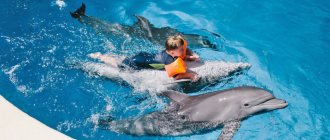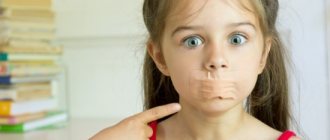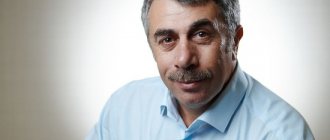Article:
General speech underdevelopment is divided into 4 levels, depending on the degree of severity.
Type 1 OSD is the most severe degree of the disorder, in which a child 3 years of age or older is completely speechless. Either he pronounces only individual sounds or syllables, and does not use common speech. If you do not begin to correct the disorder, it will lead to complications and have a negative impact on personal development, social and psycho-emotional spheres. Neurologists and speech pathologists-defectologists are involved in the diagnosis and correction of general speech underdevelopment of level 1. In this article we will talk about OHP: what it is, characteristics of 1 OHP, diagnosis, prevention and prognosis.
ONR 1st degree: what is it and where does it come from?
The characteristics of general speech underdevelopment of the 1st level are as follows.
Instead of words - babbling, like a nine-month-old baby, onomatopoeia. There are a few words that denote important everyday things, but they are also distorted beyond recognition. Complex words are simplified to 1–2 syllables. Most often, the pronunciation of individual sounds is also impaired. Such children communicate using facial expressions, gestures and intonations. Understanding of speech can be at different levels - from completely age-appropriate to failure to understand a word out of context or situation. Neurologists look for the causes of the first level of speech underdevelopment in severe pregnancy, serious conditions in newborns, past infections and traumatic brain injuries.
OHP can be specified by establishing its clinical form:
- alalia - unformed understanding or reproduction of speech;
- aphasia - complete or partial loss of already formed speech, usually associated with illness or injury;
- dysarthria - a disorder associated with changes in the shape or conduction disturbances of the nerves of the organs of articulation - the tongue, lips, jaws;
- Rhinolalia is a condition that occurs due to clefts of the upper lip and palate and associated delay in speech development.
It happens that physically everything is fine with the child, but speech is not formed. This is usually associated with unfavorable developmental conditions - frequent hospitalization, pedagogical neglect and social isolation, lack of emotional interaction. Similar problems occur in children of deaf-mute parents and children living in bilingual families.
Four levels of OHP
General speech underdevelopment occurs in 40% of preschool children. Speech therapists distinguish four levels of speech development:
- Level 1 – characterized by a complete absence of coherent speech. In the medical field, this condition is called “speechless children.” Babies communicate using simplified speech or babble, and also actively gesture;
- Level 2 – the initial development of general speech is observed, but the vocabulary remains poor, and the child makes a large number of mistakes when pronouncing words. In such cases, the maximum that a child can do is utter a simple sentence that will consist of no more than three words;
- Level 3 – differs in that children can compose sentences, but the semantic and sound load is not sufficiently developed;
- Level 4 is the mildest stage of the disease. This is explained by the fact that the child speaks quite well, his speech is practically no different from his peers. However, disturbances are observed during pronunciation and construction of long phrases.
Diagnosis: how not to miss something important
General underdevelopment of level 1 speech in a child can be combined with diseases of the ear, nose and throat, mental disorders and dental problems. At the NeuroSpectrum Center for Pediatric Speech Neurology and Rehabilitation, a child can be examined, in addition to a speech therapist, by a neurologist (including one specializing in logoneurology - speech disorders associated with diseases of the nervous system). If necessary, you can consult a psychiatrist.
The speech therapist, having familiarized himself with the history of the child’s development, evaluates the general condition and activity of speech, the baby’s articulation, pronunciation of individual sounds, the ability to construct phrases, and the number of words. Based on the inspection, he determines:
- the presence and degree of speech underdevelopment;
- clinical form and its specific type, for example sensorimotor alalia;
- diseases that have led to speech problems or accompany them.
The result of the examination is an individual speech correction plan, which may include, in addition to purely speech therapy sessions, recommendations for observation or treatment by doctors of various specialties. If a child needs an integrated approach, our Center’s specialists will provide it. The interaction of a speech therapist with doctors who correct speech disorders makes helping the child more effective.
Grade 1 OCD almost never goes away on its own. Without classes with a speech therapist, a child will not be able to be admitted to a comprehensive school. It will be difficult for him to establish relationships with peers. In the absence of speech without special classes, mental and mental development suffers. All this can be avoided by promptly contacting a speech therapist.
Comprehensive diagnosis of the disease
The examination involves a pediatrician, neurologist, otolaryngologist, speech pathologist, and psychiatrist.
The pediatrician assesses the general health of the little patient and provides referrals for consultations with specialized specialists.
The otolaryngologist evaluates hearing acuity and excludes deafness.
A psychiatrist assesses the mental health of a small patient and excludes diseases according to his profile, which may also be accompanied by impaired speech development. This includes, for example, autism.
But the leading role is assigned to the neurologist and speech therapist. It is these specialists who diagnose the disease, assess its severity, identify the cause and develop a treatment regimen.
A neurologist assesses the patient’s neurological status, prescribes hardware diagnostics (for example, MRI of the brain), determines the cause of speech disorders and makes recommendations to a speech therapist. For type 1 OHP, the neurologist usually prescribes drug therapy, physiotherapy, and massage.
Speech therapy correction
A speech pathologist-defectologist determines the child’s speech status. First, he collects an anamnesis - from the opinions of other specialists and information provided by the parents. He asks the parents how the pregnancy proceeded, when the baby began to show speech activity (for example, began to coo), when he said the first word, how much he generally strives to communicate - all this is very important.
Then the speech therapist studies the child’s speech apparatus and examines the components of the language: features of sound pronunciation, the little patient’s ability to compose a meaningful, coherent and literate text, and the volume of vocabulary.
Based on the data obtained, the specialist makes a final diagnosis: the form and degree of speech development disorder, and also prescribes a correction program.
Since in group 1 OHP all parts of the language system are severely underdeveloped, the child does not speak common speech, a speech therapist teaches him to understand speech addressed to him, increases speech activity, and activates speech imitation.
Additionally, the small patient is prescribed speech therapy massage (normalizes speech muscles to make it easier for him to pronounce sounds), microcurrent treatment (activates the speech centers of the brain) and drug therapy. All these procedures are prescribed by a neurologist.
The correction of grade 1 OHP is approached in a comprehensive manner. It is impossible to achieve results on your own at home, so the child must systematically study with a speech therapist-defectologist. Exercising at home with your parents is also important - a specialist will give you a set of exercises. All exercises are performed in the form of a game. As a rule, children with grade 1 ODD are trained individually, although sometimes classes are conducted in groups of 2–3 people.
Only this approach will help the child move to a higher level of speech development and master new skills.
Complications of type 1 OHP
Neurologists and speech therapists say that up to the age of 3, children can speak the way they want and the way they can. Each baby has its own pace of development, so your son or daughter may not “fit” into the age range. But if a child is 3 years old and has only said his first word, this may already indicate a delay in speech development.
If, at the age of 5, he speaks at the level of a two-year-old (slowly, not in sentences, incoherently), his speech is illiterate and incomprehensible, then it is worth urgently showing him to a neurologist or speech therapist. Even if your child understands speech addressed to him and fulfills requests, do not expect him to speak out on his own. You can only waste time. Namely, it plays a decisive role in the correction of the first level of OHP.
If you ignore the problem, it will progress quickly. And this goes beyond just speech: against the backdrop of worsening speech underdevelopment, the baby’s mental development is also disrupted. He cannot think productively, does not remember well, his physical development, coordination of movements, and fine motor skills suffer.
Further - worse. Personal changes also occur: the child becomes withdrawn, does not want to communicate with peers and parents, becomes indifferent to everything, self-esteem decreases, and behavioral disorders begin.
Children with speech underdevelopment cannot master the curriculum of a regular school, so they are sent to special schools.
As a result, mental retardation is formed against the background of a general speech disorder.
Prognosis and prevention of disorders
The prognosis depends on various factors - the cause and form of the disorder, the timeliness of the correction started, and the regularity of classes. Such children have fully intact compensatory capabilities, so they quickly respond to corrective measures. The earlier treatment begins, the better results can be achieved. If the child is 3 years old, this is the best time to start correction - by the age of 5 - 7 years, you can bring his speech closer to normal or completely eliminate the problem. If you ignore the disease, it will only progress.
No one is immune from speech pathologies. Therefore, for the purpose of prevention, it is better to show a child aged 2.5 to 3 years to a speech therapist. The specialist will assess the speech status of the little patient. And if it reveals a discrepancy with age standards, it will immediately begin correction.
Family also plays a huge role. A friendly atmosphere in the home and a warm attitude are the foundations for the normal development of any child. Parents should engage with their daughter or son: talk to him, tell him, explain, play, communicate, engage him in dialogue - all this activates speech activity.
From silence to the first phrases
Systemic speech underdevelopment of the 1st level is eliminated in parallel with the treatment of its cause. At the initial stage, the baby is taught to understand speech in a playful way: to find toys, guess objects, follow simple instructions. During classes, vocabulary expands. To activate speech, children are taught to imitate the voices of animals and the sounds of musical instruments. They are taught demonstrative pronouns and shown how to address relatives.
At the same time, work is underway to develop the functions without which speech is impossible. These are attention, memory and thinking. They play “What’s extra” with the child and ask them to perform simple actions according to the model.
At this stage of correction, the main thing is the appearance of a simple phrase and an increase in speech activity. The child will be taught how to pronounce sounds correctly later.
Speech therapy work for stage 1 ODD takes at least 3–4 years, and the fight against residual effects can continue at school age.
Symptoms
Children with ODD speak their first words late. Usually by three or four years, sometimes by five. Speech is rarely used, sounds are pronounced incorrectly and phrases are constructed incorrectly. Others do not understand such a child well.
First level. The child cannot pronounce many sounds. Speaks in babbling words. He complements them with facial expressions and gestures, the meaning of which is difficult to understand outside the situation. Vocabulary is limited to consonances, onomatopoeia and a few words. He cannot speak in phrases and does not understand the meaning of many words.
Second level. The child distorts sounds and replaces them. Along with babbling and gestures, he begins to speak in simple sentences of up to three words. Often uses cases incorrectly and coordinates words. Peers know noticeably more words.
Third level. The child pronounces sounds and syllables, making mistakes mainly in difficult cases. Speaks in detailed phrases, but uses simple sentences, having difficulty constructing and understanding complex ones. Uses all parts of speech, but makes mistakes in prepositions and agreement. Names objects inaccurately, and also makes mistakes in cases and accents.
Fourth level. The child pronounces specific sounds and complex words with errors. The vocabulary is varied, but the child has difficulty understanding rare words, synonyms and proverbs. They have difficulty setting out a logical chain of events. They often miss the main point and get stuck on details and repeat themselves.
General speech underdevelopment level 1
A violation of this degree means an almost complete absence of speech in the child. Problems are visible to what is called the “naked eye.”
What does it show:
- A child's active vocabulary is very poor. To communicate, he uses mainly babbling words, the first syllables of words, and onomatopoeia. At the same time, he is not at all averse to communicating, but in “his” language. A cat means “meow”, “beep” can mean a car, a train, or the process of driving itself.
- Gestures and facial expressions are widely used. They are always appropriate, carry a specific meaning and, in general, help the child communicate.
- Simple sentences either simply do not exist in the child’s speech, or may consist of two amorphous words combined in meaning. “Meow bee bee” during the game will mean that the cat drove the car. “Woof di” means both the dog is walking and the dog is running.
- At the same time, the passive vocabulary significantly exceeds the active one. The child understands spoken speech to a much greater extent than he can say himself.
- Compound words (consisting of several syllables) are abbreviated. For example, bus sounds like "abas" or "atobu". This indicates that phonemic hearing is unformed, that is, the child does not distinguish individual sounds well.
General speech underdevelopment level 2
The main striking difference from level 1 is the constant presence in the child’s speech of a certain number of commonly used words, although not yet pronounced very correctly. At the same time, the beginnings of the formation of a grammatical connection between words are noticeable, although not yet permanent.
What to pay attention to:
- The child always uses the same word, denoting a specific object or action in a distorted form. For example, apple will always sound like “lyabako” in any context.
- The active dictionary is quite poor. The child does not know words denoting the characteristics of an object (shape, its individual parts).
- There is no skill in combining objects into groups (a spoon, plate, pan are utensils). Objects that are similar in some way can be called in one word.
- Sound pronunciation is also far behind. The child pronounces many sounds poorly.
- A characteristic feature of level 2 OHP is the appearance in speech of the rudiments of a grammatical change in spoken words depending on the number. However, the child can only cope with simple words even if the ending is stressed (go - goUt). Moreover, this process is unstable and does not always manifest itself.
- Simple sentences are actively used in speech, but the words in them are not consistent with each other. For example, “papa pitya” - dad came, “guyai gokam” - walked on the hill, etc.
- Prepositions in speech may be completely missed or used incorrectly.
- A coherent story - based on a picture or with the help of an adult's questions - is already obtained, in contrast to the state at level 1 OHP, but it is very limited. Basically, the child uses two-syllable, inconsistent sentences consisting of a subject and a predicate. “Guyai gokam. Videy seg. Ipiy segika." (Walked on a hill, saw snow, made a snowman).
- The syllabic structure of polysyllabic words is disrupted. As a rule, syllables are not only distorted due to incorrect pronunciation, but also rearranged and simply thrown out. (Boots are “bokiti”, people are “tevek”).
Causes
The etiology of level 1 OHP in children is always associated with harmful effects on the baby’s body during the prenatal and postnatal period. The formation of correct speech and its development according to age are adversely affected by:
- Toxicosis in the expectant mother
- Fetal hypoxia during pregnancy and childbirth
- Presence of Rh conflict between fetus and mother
- Head injuries
- Prematurity
- Infections
- CNS damage
- Encephalopathy
- Primary defects: alalia, aphasia, dysarthria, rhinolalia
In a small number of children, type 1 OHP becomes the result of pedagogical neglect, social isolation, lack of verbal communication, and emotional tension in the family.
Treatment of patients with alalia
The system of corrective action for sensory, motor and mixed alalia should include a set of procedures with an impact on the pathology itself and accompanying diagnoses. In correctional centers, specialized preschool educational institutions and speech therapy hospitals, medical, psychological and pedagogical therapy is used when treating patients with alalia. Drug treatment is mainly aimed at stimulating the formation of brain structures.
For pathologies of speech centers in the cerebral cortex, experts note the high effectiveness of the following physiotherapeutic procedures:
- DMV;
- IRT;
- hydrotherapy;
- laser therapy;
- electrophoresis;
- magnetic therapy;
- electropuncture;
- transcranial electrical stimulation.
When treating alalia, it is important to focus on the development of motor skills, thinking, and memory. The disease is caused by systemic disorders, therefore speech therapy treatment should be based on full coverage of sound-letter formulations and combinations, visualization of concepts, as well as concentration. Speech therapy massage and logorhythmics must be carried out along with speech therapy classes.
It is recommended that children with alalia begin to learn the alphabet, counting and writing as early as possible. Such skills allow you to better develop memory, learn to compose syllables into words and control speech.
In complex therapy of motor alalia, the main work should be aimed at:
- stimulation of speech activity;
- development of coherent speech;
- formation of speech reserve;
- grammatical format of the statement.
With a diagnosis of “sensory alalia,” the emphasis of speech therapy should be focused on developing skills to distinguish speech and non-speech sounds, differentiate words, and understand speech instructions.
It is important to systematically work through:
- correct phonemic awareness;
- acoustic skills;
- associative series.
Pathogenesis
General speech underdevelopment develops in children against the background of other primary defects. This is aphasia, alalia, when a child’s active speech and its understanding are grossly upset. In other cases, OHP develops due to anatomical defects of the speech apparatus - rhinolalia, dysarthria. With such defects, sound pronunciation, syllabic composition, vocabulary and grammar of speech disintegrate.
According to researchers, preschoolers with ODD lag behind their peers not only in speech indicators, but also intellectually and physically. This is due to the timing of speech maturation, the ability to learn new things, and socialize.







